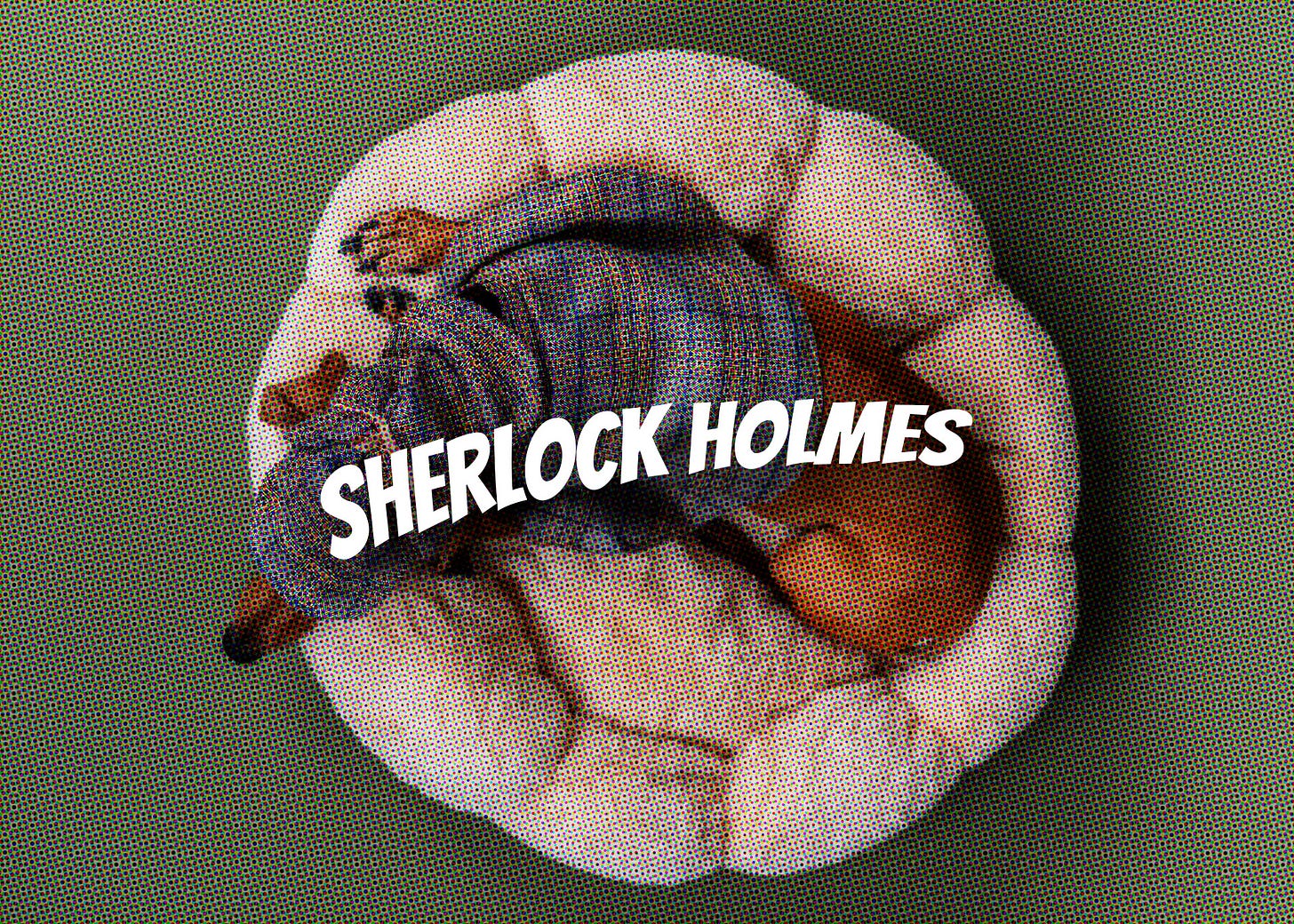Our season of Sherlock Holmes adaptations gets childish as we consider the mystery of why, in the mid-’80s, there were two animated versions of Holmes in which all the characters were anthropomorphic animals: Sherlock Hound (1984) and The Great Mouse Detective (1986).
At some point in the early ‘80s I had an audition for the role of Watson in the film The Young Sherlock Holmes. I did not get it. The part went to an actor called Alan Cox, who was (and presumably still is) the son of Brian Cox. Also appearing in the film was the daughter of Simon Ward. I think we can all agree these are amazing coincidences.
My lack of a famous parent -- or, to be more fair, my lack of talent -- aside, I was far too tall and skinny. What the casting people wanted was a short chubby boy; someone who might conceivably grow up to become Nigel Bruce’s Watson, the corpulent duffer of the later Rathbone films.
The Young Sherlock Holmes is full of these references. Like so many origin stories, it rapidly becomes a sort of supermarket sweep, careening about the canon snapping up a deerstalker here, an Inverness cape there; a beaker full of chemistry experiments, an explanation of why Holmes is not interested in women, and don’t forget the meerschaum pipe!
The thing is that most of these elements aren’t, strictly speaking, canon at all. The hat and cloak come from a single illustration by Sidney Paget; the pipe comes from the actor William Gillette (although I noted, on rereading Edgar Allen Poe, that C. Auguste Dupin, the inspiration for Holmes, is described as smoking a meerschaum). All of these things are really references to later portrayals of Holmes, mostly those by Basil Rathbone. They play on the legend, not the character.
The villain of the movie is Holmes’s fencing teacher, who turns out to also be the High Priest of a sect of Ancient Egyptian assassins. (It is not, as you might be beginning to suspect, a good movie. Produced by Stephen Spielberg, it came out the year after Indiana Jones and the Temple of Doom (1984) and appears to have just reused parts of the plot, with almost as much cultural insensitivity.) Like all good pulp villains, the fencing master appears to die at the climax. But a post-credits sequence reveals him to have survived, and we see him checking into a Swiss pension under the name Moriarty.
Moriarty is a key figure in two other kid-friendly mid-‘80s adaptations of Sherlock Holmes. Both, interestingly, are anthropomorphic animations. The hero of Disney’s 1986 The Great Mouse Detective is called Basil, after Rathbone, who voices the part of Holmes, in whose cellar Basil the mouse detective lives. A criminal mastermind called ‘Professor Ratigan’ features as the villain, presumably because no one could quite bring themselves to use the name ‘Moriraty’.
In the Italian/Japanese animated TV series Sherlock Hound (1985), meanwhile, everyone is a dog of some sort, and they all live in an entirely canine steampunk Britain. (The female dogs’ ears emerge from Gibson Girl doughnuts of hair, which is deeply disconcerting.) Bizarrely, Sherlock Hound himself is a fox and not a hound at all (‘Slyfox Holmes’ was right there, gang), Moriarty is, inevitably, a wolf. Sherlock Hound raises Moriarty to the status of regular villain; the episodes generally revolve around Sherlock foiling his evil schemes.
The irony is that Moriarty was only introduced by Conan Doyle -- in ‘The Adventure of the Final Problem’ (1893) -- to kill Holmes, and he dies in the same story. He is referred to in some later stories (including some that predate ‘The Final Problem’ in the fictional timeline), but he is not a constant or recurrent villain.
In a way, Moriarty had to be introduced because he didn’t exist. The Holmes stories are, by and large, standalone mysteries. They have few recurring characters beside Holmes and Watson, Mrs Hudson, various representatives of Scotland Yard, and the occasional Baker Street Irregular. Each has a different setting, a different context, and a different villain. It is hard work to originate all those plots, all the motives and opportunities and means. Even though he was remarkably good at it, it is no wonder that Conan Doyle pretty quickly decided that he wanted to chuck Sherlock Holmes down a waterfall. The trouble was that he had gone to a lot of trouble to establish Holmes’s infallibility; now, he needed to create a character with even greater powers. Hence ‘the Napoleon of Crime’, Professor Moriarty.
It’s a shame he didn’t think of him sooner, because the archenemy is an all-purpose story engine. The villain comes up with a scheme, usually intended to fox the hero; the hero foils it; the villain escapes justice. ‘Curse you and your infernal meddling! I’ll have my revenge!’ And repeat. The two of them are locked in an endless Manichaean tug-of-war; each heave is a new episode, but the story remains the same. The hero and villain are forever tussling, but they never quite plunge down the cascade.
Part of the reason for Holmes’ longevity is precisely that fecundity of plot and character that the absence of a nemesis required of Conan Doyle. It meant he could use the Holmes cases to tell all kinds of stories. Although, strangely, never stories in which all the characters were inexplicably transformed into dogs.
Keep reading with a 7-day free trial
Subscribe to The Metropolitan to keep reading this post and get 7 days of free access to the full post archives.




